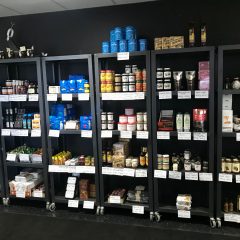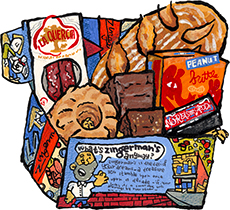
Jan/Feb 2021 Zingerman’s Newsletter
Download Newsletter PDF ( 9Mb )
Read more »
Bring on the zing. Occupy the kiddos in style or take a moment to destress yourself. In fact, let’s all sit down and color together. Because together, we are amaZING. Below you can download and print eight different Zingerman’s Community of Businesses coloring pages. Have fun! We’d love to see your work, if you care […]
Read more »
This is the inside scoop on a secret Zingerman’s shopping location with special sales and food gifts to-go. An Ann Arbor local’s guide to shopping Zingerman’s Mail Order. Zingerman’s Mail Order is the online store for food lovers at zingermans.com. They ship bountiful gift baskets, monthly food clubs, sandwich kits, rare pantry finds and so […]
Read more »
Behold the top five most unique holiday gifts from zingermans.com. These rare food finds have holiday flavors and gift-worthy packaging. They don’t call Zingerman’s Mail Order the land of 1,000 flavors for nothing. The online retailer has been traveling the country and the world searching for the best in food since the 1990’s. Today they […]
Read more »
Dining out with kids at Zingerman’s Roadhouse in Ann Arbor is a special experience for kids and parents alike, because of the tasty menu and more. Variety With more than a dozen items on the kids’ menu, and half a dozen side options, young diners can build a meal that’s just for them at Zingerman’s […]
Read more »
The Food Gifts That Make Zingerman’s Mail Order Zingerman’s Mail Order has been sending the best in food since the 1990’s. Today they have an unrivaled selection of food gifts, olive oils and vinegars, chocolates and confections, and Zingerman’s made specialities like breads, cakes, gelato and candy. Here’s their Top 5 Most Popular Gifts. You […]
Read more »
Zingerman’s Art for Sale